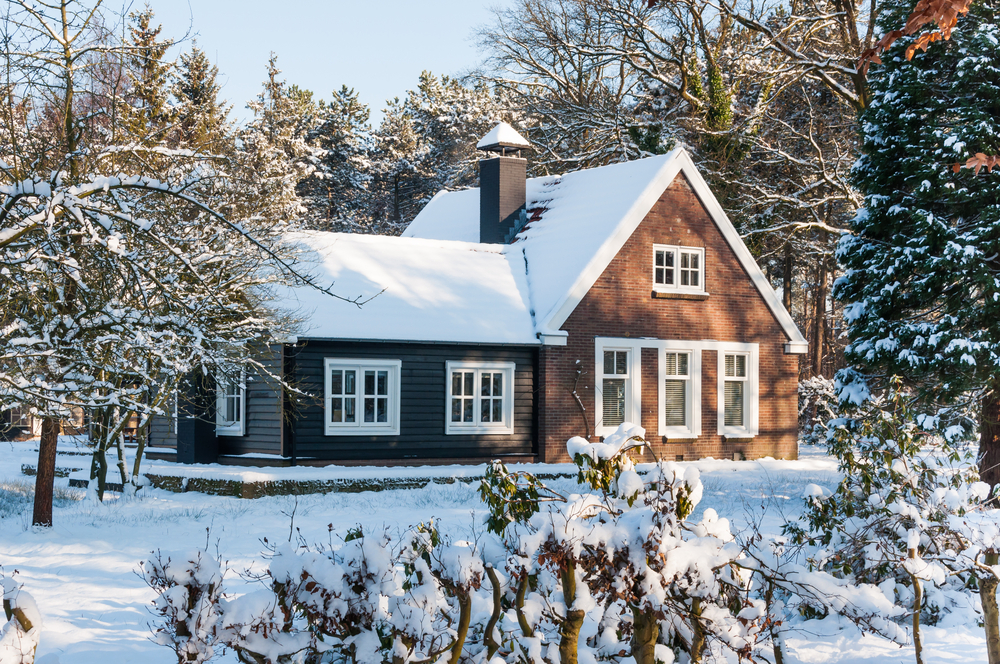Howling wind, icy rain, heavy snow: Winter brings some serious challenges. In addition to making your morning commute harder, winter weather is tough on your home. Water is arguably the most damaging part, and keeping it out is critical. As darker, colder days approach, it’s time to turn your attention to roof maintenance to prevent ice dams and leaks. Here’s how to protect the roof over your head.
Understanding the Risks
The importance of roof maintenance cannot be overstated. Whether you live in an area that drops below freezing in November or one that has December days in the 60s, winter brings two main risks: ice dams and leaks.
Ice dams
Ice dams form at the edge of the roof line. They may seem harmless, but when snow begins to melt, these dams prevent water from draining off the roof and away from your home.
Ice dams are caused by uneven roof temperatures. When parts of the roof hit temperatures above 32 degrees, snow starts to melt. If the edges of the roof are in the shade and still frozen, the meltwater will hit the edges and freeze. A dam forms, with disastrous consequences.
If not addressed, ice dams can grow, forcing water back under the shingles. Once water is under the shingle, it’s just a matter of time before it begins to seep into the home. Damage to the insulation, ceilings, and walls are just the beginning. Over time, the structural integrity of the roof can become compromised, which could be dangerous to you and a red flag to buyers if you ever decide to sell.
Leaks
Roof leaks in winter are primarily a result of ice dams, but that’s not the only way they form. Shingles damaged by wind can allow water into the house, too. The cycle of freezing and thawing plays a big part in how extensive the damage can become. Water that seeps into even the smallest and most insignificant cracks will expand when it freezes, enlarging the crack. When the ice thaws, water will seep into the larger space, and the cycle continues.
An ounce of prevention
Preventative maintenance is the best way to keep your roof secure and prevent ice dams and leaks during the winter. Simple measures can protect your roof.
Conduct regular inspections
Before the first freezing rain, thoroughly inspect your roof to identify damaged or missing shingles, clogged gutters, or insulation that is not up to the task. Replace and repair shingles, clear your gutters, and beef up your insulation. This step alone significantly reduces the risk of ice dams and leaks.
Add insulation and ventilation
Uneven temperatures that contribute to ice dams can be caused by inadequate insulation and ventilation in attic spaces. Proper insulation keeps heat inside the home, and good ventilation allows moisture caused by trapped heat to escape. Energy Star guidelines recommend 10 to 14 inches of R-38 insulation in attics. If yours doesn’t measure up, adding more can help.
Remove snow
Removing snow soon after significant accumulation occurs prevents ice dams from forming as the snow melts. Use a tall ladder and a roof rake to safely remove as much as possible. Do not stand on the roof itself.
Add heat
For parts of the country where a light dusting of snow is more common than an apocalyptic blizzard, the above actions might sufficiently decrease ice dam formation and protect your roof. For snowier climates, consider installing heating cables. These are placed along the edges of the roof to clear ice and allow meltwater to flow smoothly off your roof.
Keep gutters clean
Blocked gutters filled with leaves and other detritus can freeze no matter how clear your roof is. When this occurs, water can be pushed under the shingles, and the weight of the accumulated ice might actually tear the gutter off your house. Make sure gutters are free of debris before the first snowfall, and check once or twice during the winter, too.
Know when to call a pro
In many cases, a homeowner can handle simple roof maintenance, but it’s advised to have a professional take charge when it comes to identifying potential problems. Roofing pros can spot small problems before they get out of hand. They can also help install heating cables and recommend proper tools for clearing roofs and gutters.
Important Maintenance Tips for Metal Roofing Materials
How to Choose the Right Roofing Material for Your Home
Most Durable Roofing Materials and Which One is Right for You


